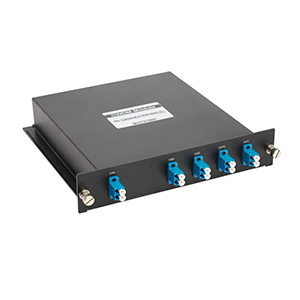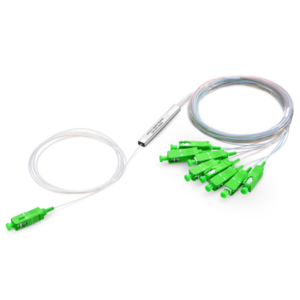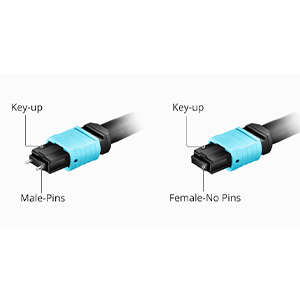As a person who is passionate about network technology, I am very interested in the functions and application areas of the SPF (Small Form-factor Pluggable) module. In this article, I will introduce you to the basic principles, types and application scenarios of SPF modules, as well as its importance in the field of optical fiber communications. We will also discuss the technical standards, features, and benefits of the SPF module, as well as important information on deployment and configuration. I hope this article can help you better understand and utilize the SPF module to meet the growing demand for high bandwidth.
Introduction to SPF module
Definition and rationale:
The SPF (Small Form-factor Pluggable) module is a miniaturized, hot-swappable optical module used for data transmission in optical fiber communications. It is a standardized interface that can be inserted into the slot of fiber optic equipment to provide fiber optic transceiver functions.
The SPF module is based on a variety of photoelectric conversion technologies, converting electrical signals into optical signals for transmission, and converting received optical signals into electrical signals for reception and processing. It usually contains a fiber optic transmission port and a receiving port for sending and receiving optical signals.
The working principle of the SPF module is realized through an optical-electrical converter (Optical-Electrical Converter) and an electro-optical converter (Electrical-Optical Converter). The photoelectric converter converts the electrical signal into an optical signal and transmits it through the optical fiber, and then the electro-optical converter converts the received optical signal into an electrical signal for processing and decoding.
Development of optical fiber communications:
SPF modules are important and widely used in the field of optical fiber communications. With the rapid development of information technology and the increase in network demand, traditional cable transmission can no longer meet the needs of high-speed and large-capacity data transmission. As a high-speed, low-loss, and anti-interference transmission method, optical fiber communication has gradually become mainstream.
As a key component of optical fiber communications, SPF modules provide flexible and scalable solutions for optical fiber networks. It can be used in different fiber optic equipment, such as network switches, routers, servers and storage devices, to achieve high-speed data transmission and communication.
In general, the SPF module is a miniaturized, hot-swappable optical module that realizes the transmission and reception of optical signals through photoelectric conversion and electro-optical conversion. It is important and widely used in the field of optical fiber communications, providing reliable solutions for high-speed data transmission and long-distance transmission.
Types and application fields of SPF modules
Classification of SPF modules:
There are many types of SPF modules, each type has different specifications and functions and is suitable for different application scenarios. Here are some common SPF module types:
-
SPF (Small Form-factor Pluggable): The SPF module is the earliest type of optical module and supports a transmission rate of 1.25 Gbps. It is typically used for Gigabit Ethernet (1GbE) short-distance transmission, such as connecting network devices in a local area network (LAN).
-
SPF+ (Enhanced Small Form-factor Pluggable): The SPF+ module is an upgraded version of the SPF module and supports higher transmission rates, such as 10 Gbps. It is widely used in Ten Gigabit Ethernet (10GbE) and Forty Gigabit Ethernet (40GbE) data transmission to provide high-speed, large-capacity network connections.
-
QSFP (Quad Small Form-factor Pluggable): The QSFP module is a high-density, high-speed optical module that supports transmission rates of 40 Gbps or 100 Gbps. It is usually used in scenarios such as high-performance computing, data centers, and cloud computing to provide ultra-high-speed, ultra-large-capacity data transmission.
-
CFP (C Form-factor Pluggable): The CFP module is a large optical module that supports transmission rates of 40 Gbps or 100 Gbps. It is mainly used for long-distance optical fiber transmission, such as optical transport network (OTN) and optical communication systems.
Network equipment applications:
SPF modules are widely used in various network equipment, including switches, routers, and optical fiber transceivers. The following are the applications of SPF modules in these devices:
-
Switch: In Ethernet switches, SPF modules are used to provide high-speed, reliable network connections. By inserting the SPF module, the switch can support optical fiber connections with different speeds and transmission distances to meet various network needs.
-
Router: Routers are usually used to connect different networks. The SPF module can provide high-speed optical fiber connection to achieve fast and stable data transmission. It supports long-distance connections between routers and extends the coverage of the network.
-
Fiber optic transceiver: Fiber optic transceiver is a device used to convert optical signals into electrical signals or electrical signals into optical signals. As the core component of the optical fiber transceiver, the SPF module can realize signal transmission and reception and is used in applications such as optical fiber communications and data centers.
Technical standards and specifications of SPF module
Fiber type and distance:
The SPF module supports a variety of fiber types and transmission distances to adapt to different application needs. Here are some common fiber types and transmission distances:
-
Single-Mode Fiber (SMF): Single-mode fiber is suitable for long-distance transmission, with a smaller core diameter and high transmission bandwidth. The SPF module supports single-mode optical fiber transmission and can achieve transmission distances of tens of kilometers or even hundreds of kilometers.
-
Multi-Mode Fiber (MMF): Multi-mode fiber is suitable for short-distance transmission and has a larger core diameter and lower transmission bandwidth. The SPF module also supports multi-mode optical fiber transmission, which is usually used for local area network (LAN) and short-distance data transmission. The transmission distance is generally within a few hundred meters.
Transmission rate and protocol:
The SPF module supports different transmission rates and communication protocols to meet different application needs. Here are some common transfer rates and communication protocols:
-
1Gbps (Gigabit): The SPF module supports Ethernet communication with a transmission rate of 1Gbps. It is usually used for Gigabit Ethernet (1GbE) data transmission, such as local area networks (LAN) and data centers.
-
10Gbps (Ten Gigabit): SPF+ modules and some QSFP modules support Ethernet communication with a transmission rate of 10Gbps. It is widely used in Ten Gigabit Ethernet (10GbE) data transmission to provide high-speed, large-capacity network connections.
-
40Gbps (forty gigabit) and 100Gbps (hundred gigabit): QSFP modules and CFP modules support Ethernet communication with a transmission rate of 40Gbps or 100Gbps. They are usually used in scenarios such as high-performance computing, data centers, and cloud computing to provide ultra-high-speed, ultra-large-capacity data transmission.
The SPF module also supports other communication protocols, such as Fiber Channel, for storage network and SAN (Storage Area Network) applications.
Features and advantages of SPF module
Flexibility and pluggability:
The flexibility and pluggability of SPF modules are one of their most notable features. This means that network equipment can choose different types of SPF modules as needed to adapt to different application scenarios and needs. The pluggability of the module makes installation and replacement simple and convenient. There is no need to replace or modify the entire device, just replace the module.
By using different types of SPF modules, network equipment can support different transmission rates, fiber types and transmission distances. This enables network administrators to flexibly configure and expand based on actual needs to meet the requirements of different network environments and needs. In addition, pluggability also makes maintenance and upgrade processes more convenient, allowing faulty modules to be quickly replaced or upgraded to higher-speed modules.
High bandwidth requirements:
SPF modules have advantages in meeting the growing demand for high bandwidth. With the rapid development of data centers, cloud computing and large-scale networks, there is an increasing demand for high-speed and large-capacity data transmission. SPF modules can meet these high bandwidth requirements by supporting high-speed transmission, such as 10Gbps, 40Gbps and 100Gbps.
The SPF module provides a high-speed, reliable data transmission channel, enabling the network to handle large amounts of data traffic and real-time applications, such as high-definition video transmission, virtualization, and big data processing. They can be used in various environments such as data centers, enterprise networks, and telecommunications networks to provide users with high-performance network connections and communication experiences.
In addition to high bandwidth requirements, the SPF module also has the advantages of low latency, good anti-interference, and space saving. These characteristics make the SPF module an indispensable component in modern networks, promoting the rapid development and innovation of networks.
Deployment and configuration of SPF module
Installation of SPF modules typically involves the following steps:
-
Shut down the device: Before installing the SPF module, make sure that the relevant device has been shut down or the relevant port has been offline.
-
Insert the module: Insert the SPF module into the corresponding slot of the device. Make sure the module is aligned with the slot and push gently into the slot until the module is fully inserted.
-
Secure the module: Once the module is inserted into the slot, use screws or other fixtures to secure the module to the slot. Make sure the module is securely seated in the slot to avoid loosening or disconnection.
-
Start the device: After the installation is complete, start the device and check whether the module is correctly recognized and initialized.
It’s important to note that specific installation steps may vary depending on the device type and manufacturer. Therefore, before installing an SPF module, it is best to refer to the device’s user manual or the installation guide provided by the supplier.
Once the SPF module is installed, corresponding network configuration needs to be performed. The following are some common SPF module network configuration methods:
-
Port configuration: Configure the port to which the SPF module is connected on the device. This includes specifying parameters such as the port’s working mode (such as full-duplex or half-duplex), speed, and negotiation method. By configuring the port, ensure that the device connected to the SPF module can correctly identify and communicate.
-
Transmission parameter adjustment: Depending on the actual situation, the transmission parameters of the SPF module may need to be adjusted to ensure optimal performance and reliability. This includes adjusting parameters such as transmission rate, fiber type and transmission distance to match the connected device and fiber.
-
Network protocol configuration: Depending on network requirements, it may be necessary to configure the network protocol parameters of the SPF module. For example, for Ethernet communication, you may need to configure parameters such as IP address, subnet mask, gateway, and VLAN.
Specific network configuration methods may vary based on device type and operating system. When performing network configuration of the SPF module, it is recommended to refer to the device’s user manual, operating guide, or configuration guide provided by the supplier to ensure correct configuration and operation.
SPF module compatibility and interface types
The compatibility of an SPF module refers to its compatibility with other devices and network interfaces. Here are a few important compatibility points:
-
Device compatibility: The SPF module needs to be compatible with the device’s slot or interface to ensure correct physical connection and data transmission. Therefore, when selecting an SPF module, you need to consider the device’s compatibility requirements, such as the device manufacturer’s recommendations or supported module types.
-
Transmission media compatibility: The optical fiber type and transmission media of the SPF module need to be compatible with the connected optical fiber and transmission media. Common fiber types include multimode fiber (MMF) and single-mode fiber (SMF), while the transmission medium can be optical fiber, copper cable, or other transmission media. Make sure the selected SPF module matches the fiber type and transmission medium used to ensure normal data transmission.
-
Rate compatibility: The transmission rate of the SPF module needs to be compatible with the rate of the connected device. Common transmission rates include 1Gbps, 10Gbps, 40Gbps and 100Gbps, etc. When selecting an SPF module, you need to ensure that it supports the required transmission rates to meet the bandwidth requirements of your network.
-
Protocol compatibility: The SPF module needs to be compatible with the protocols used by the network. Common protocols include Ethernet, Fiber Channel (FC), Fiber Distributed Data Interface (FDDI), etc. Make sure the selected SPF module matches the protocol used to ensure proper data transfer and communication.
SPF modules have multiple interface types, common ones include:
-
LC (Lucent Connector) interface: The LC interface is a small optical fiber connector, usually used for single-mode optical fiber connections. It has high density, low insertion loss and good performance and is widely used in environments such as data centers and enterprise networks.
-
SFP+ (Small Form-factor Pluggable Plus) interface: The SFP+ interface is a small high-speed optical module interface that supports data transmission rates up to 10Gbps. It is the most common interface type in SPF modules, has hot-swappable functions, and supports multiple fiber types and transmission distances.
-
QSFP (Quad Small Form-factor Pluggable) interface: The QSFP interface is a high-density optical module interface that supports high-bandwidth data transmission. It can support multiple transmission rates and fiber types, such as 40Gbps and 100Gbps, and is suitable for high-speed data center and network applications.
In addition to the above interface types, there are many other types of SPF module interfaces, such as GBIC (Gigabit Interface Converter) and XFP (10 Gigabit Small Form-factor Pluggable), for different applications and network environments.
It should be noted that when selecting an SPF module, you should select the appropriate interface type according to the requirements of the device and network, and ensure that the module matches the connected device and network interface to achieve compatibility and normal data transmission.
Summarize:
As an important optical fiber communication technology, SPF modules provide flexible and pluggable solutions for network equipment. By learning the working principle, different types and application scenarios of SPF modules, we can better apply this technology to meet the needs of different network devices.
Whether in terms of fiber type and distance, transmission rate and protocol, or compatibility and interface type, SPF modules demonstrate excellent performance and flexibility. I hope this article has provided you with valuable information to make you more confident and successful in the world of networking technology.
- What is SFP module used for?
- What is the purpose of the SFP?
- What is Cisco SFP module?
- What is difference between SFP and QSFP?
- What is SFP module types?
- Why use SFP between switches?
- What is inside an SFP module?
- How do I connect to a SFP module?
- How do I know if a SFP module is working?




